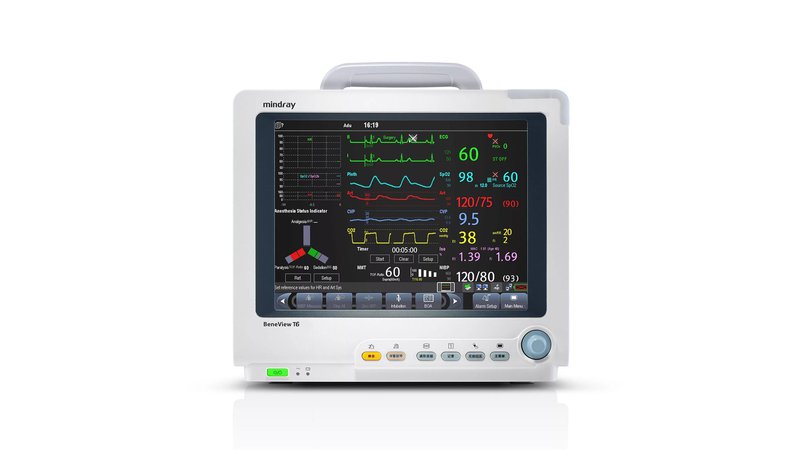Монитор пациента MINDRAY BeneView T6
- Manufacturer
- Mindray
Description
MINDRAY BeneView T6
A patient monitor that allows you to track and calculate a comprehensive set of parameters for comprehensive patient monitoring, as well as being part of a hospital-wide monitoring system, receiving and displaying data from the hospital network and other bedside monitors.
Advantages
- Buttons with icons. Convenient on-screen buttons with intuitive icons.
- Intelligent cooling system. The built-in fan automatically turns on at high loads. This allows the device to operate in normal mode absolutely silently.
- Plenty of sockets for connecting auxiliary devices. Ability to connect an external keyboard, mouse, auxiliary display. Analog output and network connector.
- Modular design. The modular "Plug-and-play" design allows the use of common modules for multiple monitors. This design allows you to connect up to 13 modules for one monitor, to obtain various configurations.
- Slot for CF card storage. The card's 4 GB capacity allows for up to 120 hours of graphical and tabular trend recording and up to 48 hours of full view waveform recording per patient.
- Built-in thermal printer. The built-in three-channel recorder records monitoring data in a convenient format.
- Light indication of alarms on the monitor case. Separate light indication for technical and physiological alarms.
- Navigation control knob. For convenient control of the mouse indicator in the graphical interface of the instrument.
Customizable GUI Modes:
- Large font display mode. The main parameters are displayed in large font for the ability to see from afar.
- Display mode 4 curves. Screen display mode 4 selected curves.
- Display mode 6 curves. Screen display mode 6 selected curves.
- Display mode 8 curves. Screen display mode 8 selected curves.
- Full curve view mode. Up to 48 hours of full view trace recording.
- Graphic trend. Up to 120 hours of graphical trend recording.
- Oxycardiorespiratorogram trend (OxyCRG). Reflects rapid changes in lung and heart function.
- PAWP measurement. Measurement of pulmonary artery wedge pressure (PAWP) to evaluate cardiac function.
- View data from other monitors. View the status of other patients from anywhere. Patient telemetry data can also be viewed from any monitor.
